Are you fascinated by the cheerful, red-breasted birds that hop around your backyard? Do you long to know more about these beloved creatures? Look no further. This ultimate guide to robins has everything you need to know.
From their distinctive appearance and captivating songs to their behaviors and habitats, we’ll cover it all.
As a bird enthusiast, I have compiled a thorough and comprehensive guide just for you. Get ready to learn, connect with nature, and appreciate these charming birds even more.
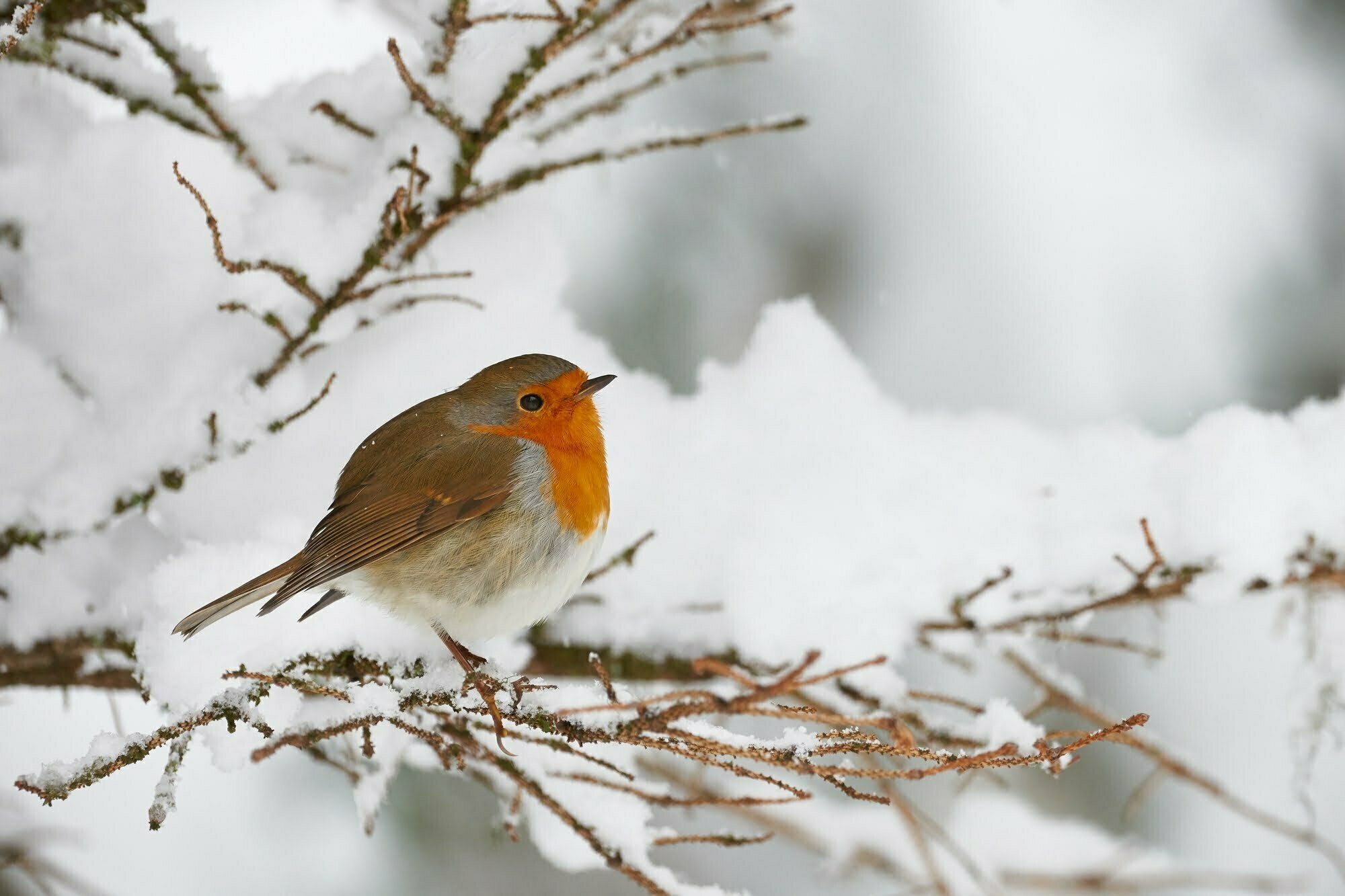
What Is A Robin?
A robin is a small, distinctive bird that is part of the thrush family. Robins are recognized for their melodious singing and are popular across North America, Europe, and parts of Asia.
In particular, the American Robin is a common sight, gracing many gardens and lawns in the United States.
Characteristics
- Size: Length of about 9-11 inches and wingspan of 12-16 inches for American Robins.
- Color: Predominantly brown with an orange-red breast and a white rump patch. In the case of the American Robin, they feature a gray back and wings.
- Diet: Insectivorous, also feeds on worms, seeds, and fruits.
Distinctions between American and European Robins
- American Robin: Turdus migratorius, more substantial in size, with a brighter, more orange breast.
- European Robin: Erithacus rubecula, found mainly in the UK and parts of Europe, with a more subdued orange breast.
Behavior
Your typical robin is active during the day (diurnal) and often seen foraging on the ground.
Robins are not just garden visitors; they can also thrive in wilder areas such as mountain forests. Their presence in your yard often signifies the start of spring. Notably, male robins are more colorful than females, aiding in their identification.
What Does A Robin Look Like? What’s Their Wingspan?
When you picture a robin, imagine a small-to-medium-sized songbird. They are recognized for their warm orange-red breast, which is a defining feature, especially conspicuous in males.
Identification Characteristics:
- Size: About 9-11 inches long.
- Wingspan: Typically ranges from 12.2 to 15.8 inches.
- Color: Gray-brown overall with an orange breast.
- Bill: Yellow.
- Male vs Female Differences: Males tend to have darker heads and more vividly colored breasts compared to females.
Robins in Flight:
- Wing Spots: Look for the white spots on their wings which are visible when they fly.
Here is a quick visual guide to help you identify robins:
| Feature | Male | Female |
|---|---|---|
| Head | Darker gray to black | Lighter gray |
| Breast | Bright red-orange | Paler red-orange |
| Wingspan | 12.2-15.8 inches | 12.2-15.8 inches |
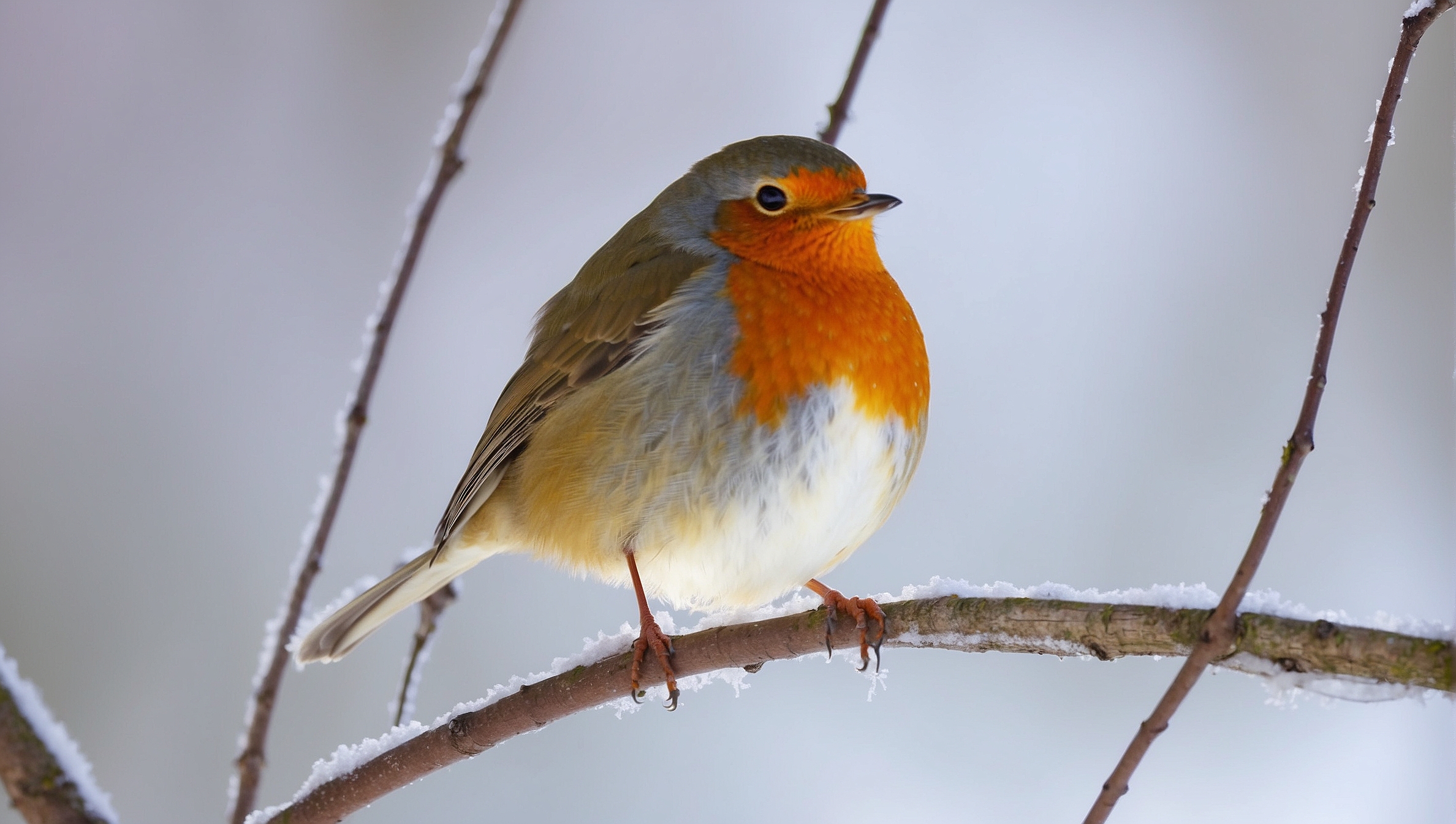
Where Are Robins Most Commonly Found?
American Robins, a familiar sight across North America, adapt well to various habitats. In your own backyard, you may frequently observe them, especially if your yard is dotted with shrubs and provides ample feeding opportunities.
These birds are also prevalent in woodlands, foraging among leaf litter and nesting within the shelter of trees.
You’ll spot robins in parks as well, where open spaces meet their needs for both feeding and nesting. Diverse park environments often teem with robins due to the blend of trees and grassy areas.
Beyond personal spaces, these birds are often found in open areas such as fields and grasslands, as long as there are perches and shrubs available.
This preference is rooted in their feeding habits, which include foraging for worms and insects on the ground.
While robins are less common in the UK, they are frequent visitors in various European and Asian landscapes.
However, it’s important to note that the robins encountered in these regions differ genetically from the American Robin, despite sharing the name.
When observing robins, remember that their presence can be seasonal in certain regions.
Some robins migrate to find optimal breeding and feeding conditions, particularly moving northward during the warmer months.
Keep an eye out for them as they pass through your area or decide to stay and make your neighborhood their home.
What Do Robins Symbolize?
Robins, with their recognizable red-orange breasts, carry a variety of meanings across different cultures. To you, a robin may symbolize several nuanced concepts.
Renewal and New Beginnings: Seeing a robin often signifies spring and rejuvenation. This bird is a herald of fresh starts. Your encounters with robins might inspire feelings of hope.
Change and Transformation: The life cycle of robins, observed through the seasons, mirrors periods of change. A robin in your life might encourage personal growth.
| Symbolism | Possible Interpretation |
|---|---|
| Fire | Passion, change, or even danger. |
| Hope | Optimism in the face of challenges. |
| Love | Joy and warmth in relationships. |
Cultural Symbolism
- Mythology and Folklore: In some stories, the robin’s red chest is linked to acts of bravery or involvement with fire.
- Native American Beliefs: To some Native American tribes, robins are seen as messengers from divine forces.
- Christian Symbolism: Your understanding of robins may also be influenced by Christian narratives where they represent faith and the divine.
Emotional Expression: The robin’s song can be perceived as melodic and melancholic, often stirring reflection on past and future aspirations.
Remember, your personal experiences with robins enrich the traditional symbolism, adding a unique layer to what these birds represent in your life.
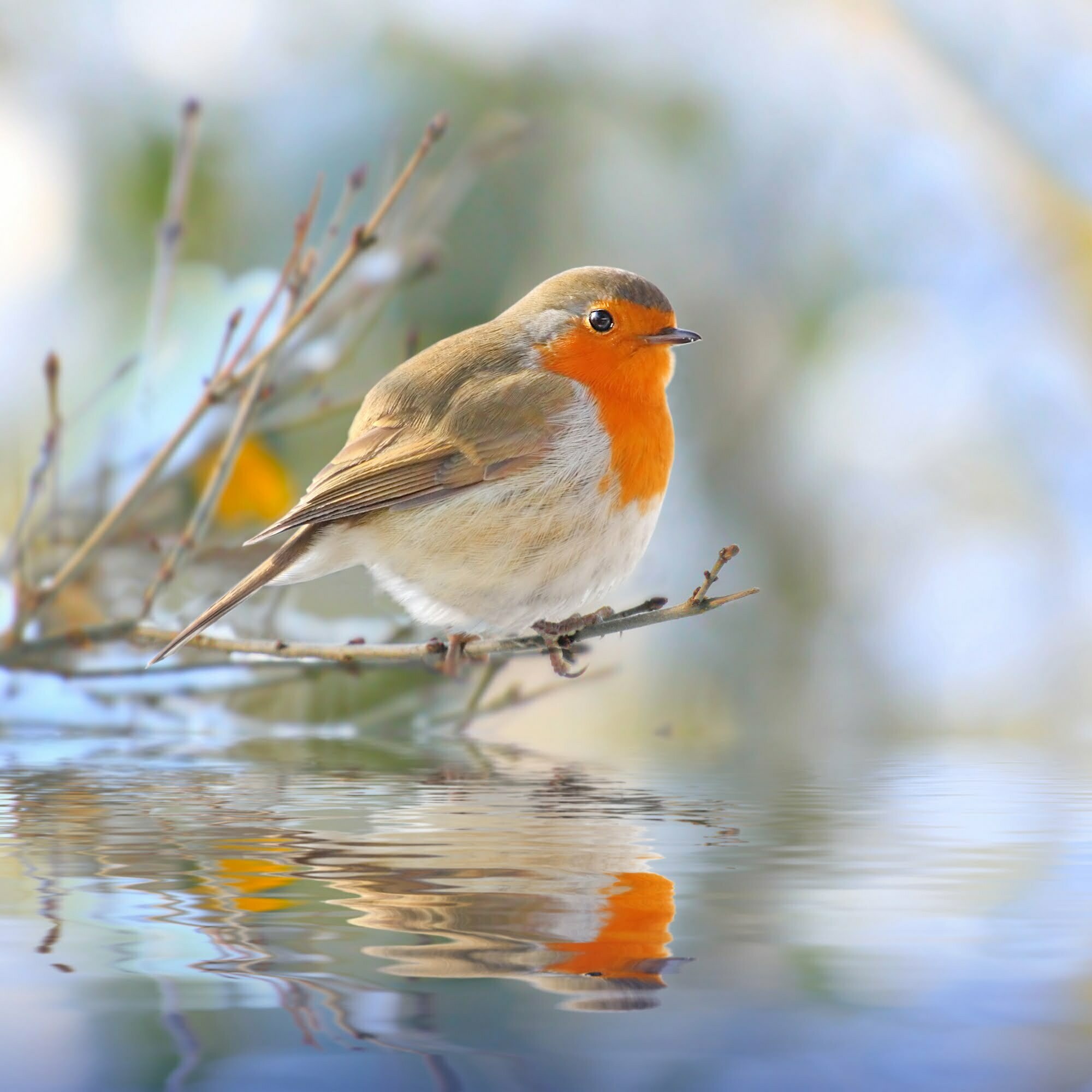
What Do Robins Eat?
Robins are versatile feeders with a diet that includes a range of food items. Your garden might serve as a buffet for them due to their varied appetite.
During different seasons, they adapt their diet based on what’s readily accessible.
Insects and Worms: A staple in their diet, robins actively seek out protein-rich food like earthworms and mealworms. These critters are essential, especially during the breeding season when robins require extra protein to raise their young.
Berries and Fruits: Outside of breeding season, robins depend more on berries and fruits, providing them with vital nutrients. They might nibble on the berries from your shrubs or the fruits you leave out in a feeder.
- Common fruits robins eat:
- Apples
- Blueberries
- Raisins
When offering fruits, such as raisins, soak them in water first to make them easier to consume.
Feeder Foods: While robins primarily forage on the ground, they will also visit feeders if the right type of food is on offer. Foods like crushed peanuts, sunflower hearts, and suet can attract robins to your garden.
- Feeder favorites for robins:
- Suet cakes
- Crushed peanuts
- Sunflower hearts
Do Robins Drink Water?
Yes, robins do need to drink water. As with most birds, water is an essential component of a robin’s diet. You might see robins at various water sources fulfilling their hydration needs.
Sources of Water:
Robins are not particularly picky about water sources. Here are some common places where you may observe them drinking:
- Natural bodies of water: Ponds, streams, and lakes.
- Artificial water features: Bird baths and garden water features.
- Accumulated water: After a rain, puddles or even collected rainwater on leaves.
How They Drink:
When a robin approaches a water source, it typically dips its beak, not just to drink, but also sometimes to bathe. Drinking is usually a quick process, involving:
- Scooping up the water with their beak.
- Lifting their head to let the water flow down their throat.
Importance of Offering Water:
If you’re eager to attract robins to your garden:
- Install a bird bath: A shallow, easily accessible bath can be a welcome spot for robins.
- Keep the water clean and fresh: Change it regularly to attract birds and prevent disease.
- During winter months, ensure the water is not frozen. A bird bath heater can be used to provide a consistent water source.
Do Robins Have Any Predators?
Indeed, robins face various threats from predators throughout their life cycle.
For Eggs and Nestlings:
- Blue Jays and Crows are known to raid robin nests.
- Squirrels and snakes also consume eggs and chicks if they discover an unguarded nest.
Adult Robins:
- Aerial predators like hawks pose a significant risk.
- Shrikes and owls will hunt robins, especially in wild habitats.
- Cats, both domestic and feral, are ground predators that can catch unwary robins.
Defensive Behaviors: Robins employ defensive strategies against these threats.
- Mobbing: Robins band together to harass a predator by chasing and dive-bombing.
| Predator Type | Defense Strategy | Affected Life Stage(s) |
|---|---|---|
| Blue Jays/Crows | Nest vigilance | Eggs, Nestlings |
| Hawks | Flocking, Alarm calls | Adult |
| Cats | Vigilance, Fleeing | Adult |
While these natural predators have reduced in numbers, the need for vigilance remains.
Your awareness of these threats can lead to better protection measures, such as keeping domestic pets indoors, supporting habitat conservation, and monitoring bird nests that may be vulnerable to urban predators.
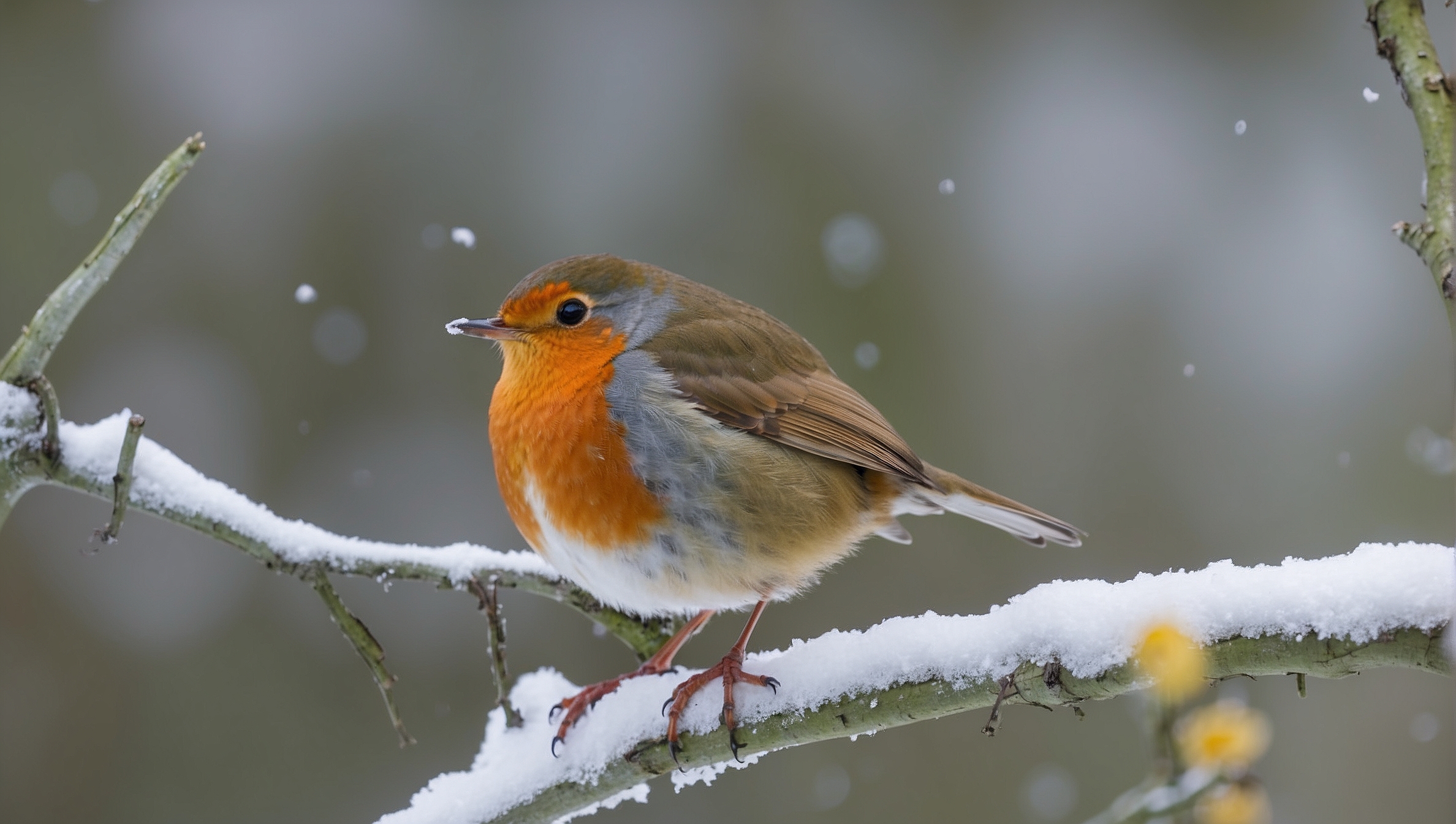
Where Do Robins Nest?
Their nests are crafted with intricate skill, utilizing mud and grass to create sturdy structures for their eggs and young.
Common Nesting Locations:
- Trees & Shrubs: You’ll find robin nests in a variety of trees—often favoring holly, dogwood, and elderberry. These native trees provide excellent shelter. The birds are not too picky and will also use other types of shrubs and trees available in their surroundings.
- Man-Made Structures: Surprisingly adaptable, robins also make nests on buildings or in other man-made structures. Look for them in mailboxes, under light fixtures, or within gutters.
Preferred Nesting Features:
- Height: Lower branches are typically preferred over higher ones, providing easier access and potentially more cover.
- Safety: Quiet places that offer some seclusion away from predators and disturbances are ideal.
- Stability: A solid ledge or horizontal branch can act as a secure base for the nest.
Nesting Materials:
Robins are resourceful, using materials like:
- Grass: Forms the majority of the structure.
- Mud: Binds the grass together and fortifies the nest.
- Soft Linings: Feathers or fine grass to create a comfortable interior for their eggs and young ones.
In your garden, it is beneficial to protect and encourage the growth of native trees and shrubs. These provide nesting sites and support the robins’ diet with fruits and insects.
If you wish to help these birds further, consider placing nesting shelves strategically around your property to give them a secure and inviting place to raise their young.
When Do Robins Lay Eggs?
As you observe the lifecycle of robins, understanding their breeding habits, including when they lay eggs, provides insight into their seasonal patterns.
Typically, robins lay their eggs from March to June, signaling the beginning of their breeding season.
Nest Construction: Before laying eggs, robins meticulously construct a nest made primarily of twigs and mud. You’ll often find these nests in the forks of trees or bushes, and sometimes on man-made structures.
Egg Laying:
- First Clutch: Begins in April.
- Subsequent Clutches: May occur, since robins can have multiple broods in a year.
- Daily Laying: Usually, one egg per day until the clutch is complete, typically containing 3-5 eggs.
Incubation Period:
- Robins typically incubate their eggs for 12-14 days.
- Fledgling Stage: The hatchlings, known as nestlings, remain in the nest and are fed by parents for a further 13-14 days until they become fledglings.
| Stage | Time Period |
|---|---|
| Nest Building | Prior to egg-laying |
| Egg Laying | March to June |
| Eggs Hatching | 12-14 days after laying |
| Nestling to Fledgling | 13-14 days in nest |
During this time, your observation and minimal disturbance will allow you to witness the fascinating transition from egg to fledgling.
How Can I Attract Robins To My Yard?
If you want to attract robins to your yard, there are a few things you can do. First, make sure there are plenty of insects for them to eat. This includes things like beetles, flies, and ants. You can also put out a birdbath or other source of water for them to drink from.
Robins also like to eat fruits and berries, so you can put out a dish of these as well. Some good options include juniper berries, holly berries, and mistletoe berries.
And finally, robins like to nest in trees or shrubs. So if you have these on your property, it will be more likely to attract robins.
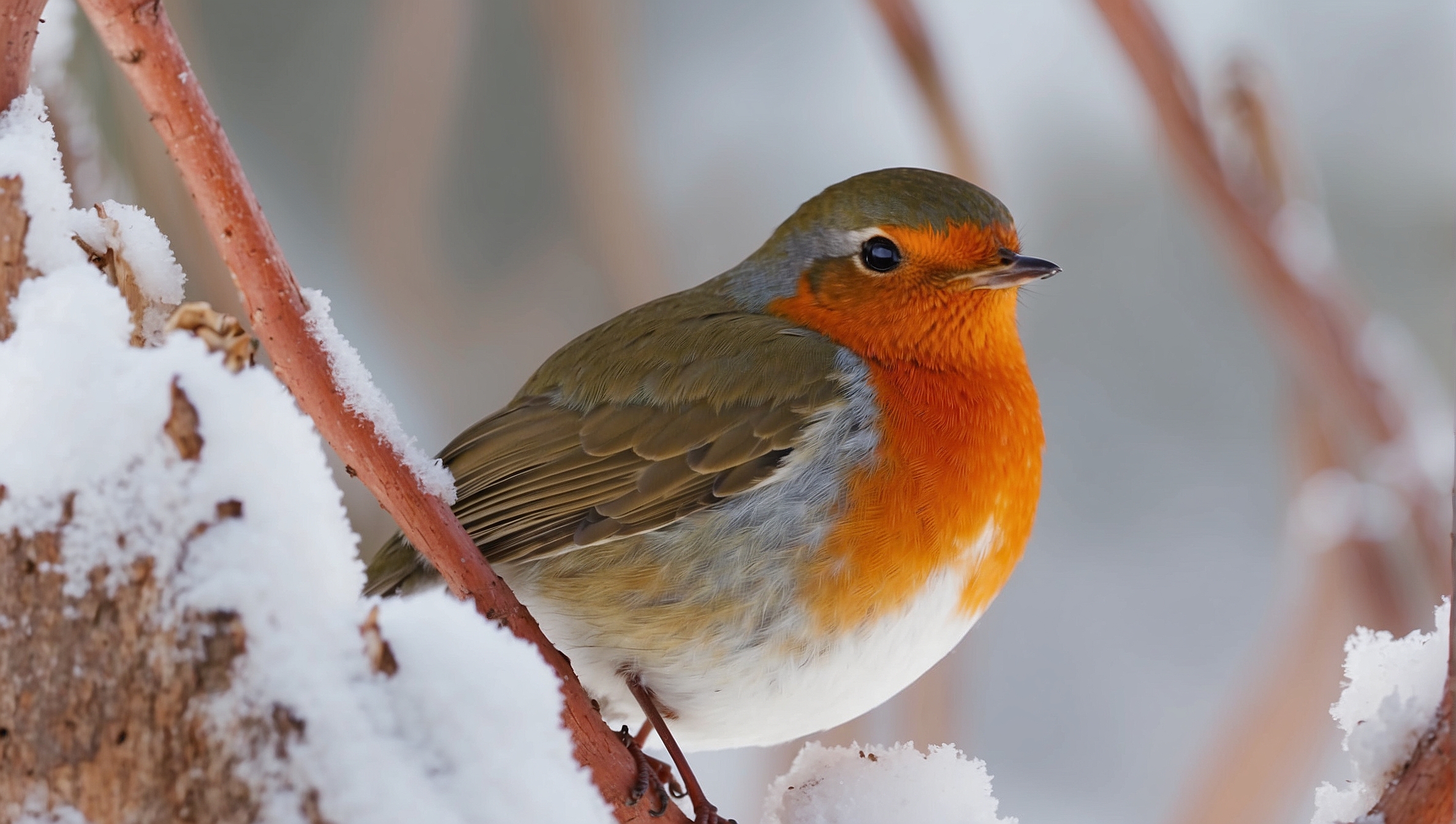
Do Robins Migrate?
Robins exhibit a range of migratory behaviors based on a variety of factors such as climate, food availability, and region.
You may notice that not all robins migrate; some populations can adapt to winter conditions and remain in their breeding range year-round.
Year-Round Feeding: Those robins residing in a place throughout the year alter their feeding habits as the seasons change. During the summer months, they primarily consume invertebrates, while in winter, their diet shifts to fruits and berries.
Seasonal Movements
- Northward Migration: Come springtime, many robins migrate to northern breeding grounds.
- Local Movements: Some robins may only move short distances to find unfrozen food sources.
- Southward Migration: In autumn, robins that nest in harsher climates tend to migrate southward.
Regional Differences
- Interior States: Robins in regions like Colorado and Utah may migrate toward Mexico.
- Coastal States: Those along the coasts are more likely to remain on location, depending on food supply.
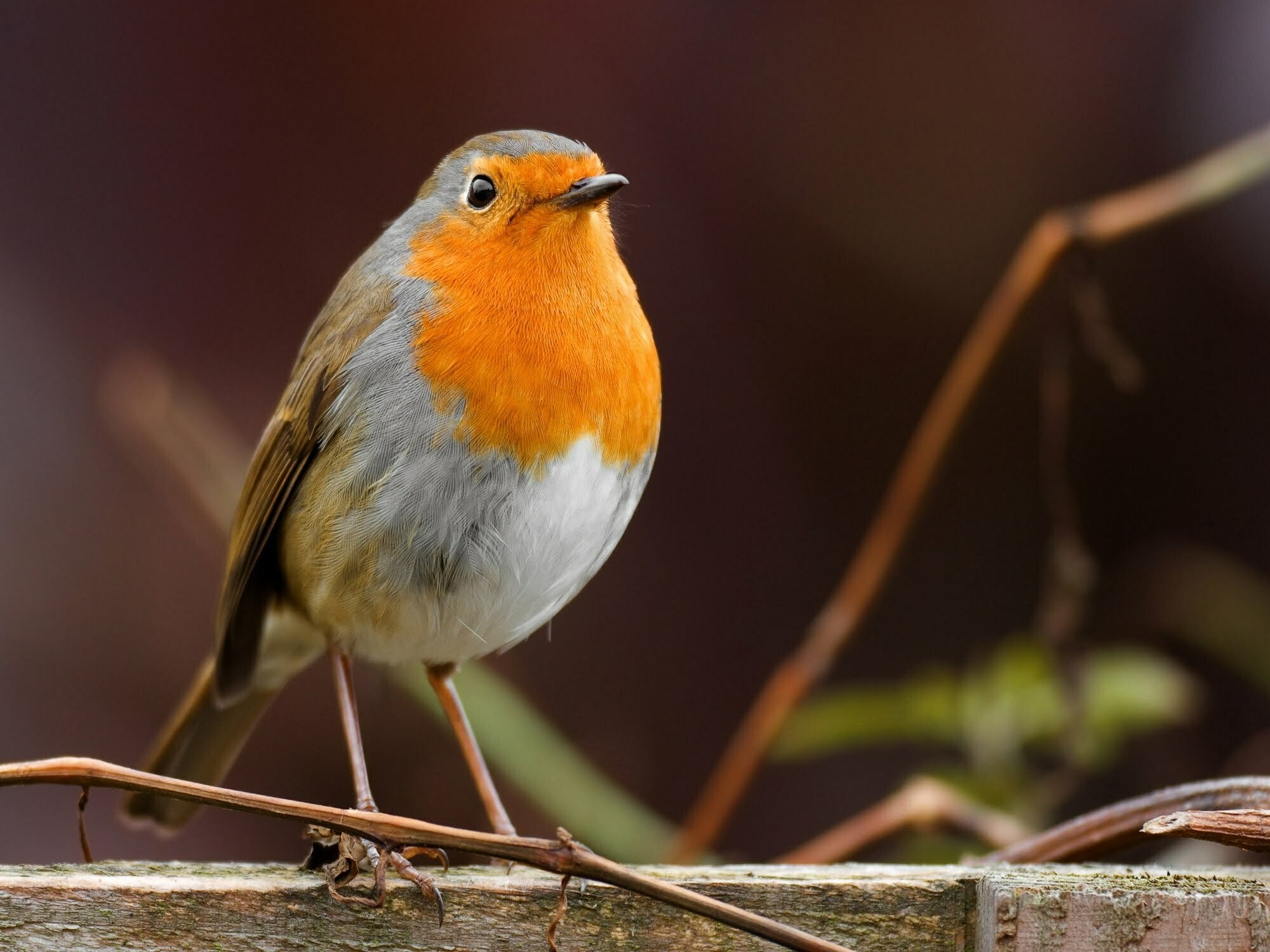
How Can I Tell If A Robin Is Male Or Female?
Determining whether a robin is male or female can be subtle, but there are distinct characteristics to look out for:
Plumage
- Male robins: Exhibit bright red or rust-colored breasts, which are vibrant and catch the eye. Their heads may be black, with white markings around the eyes.
- Female robins: Generally have paler underparts and their red breast is not as pronounced. Their overall coloration is more subdued, often described as a duller brown.
Size
- Male robins: They are typically larger, but this is not always reliable due to overlap in size between the sexes.
- Female robins: Can also appear larger, especially when carrying eggs, making size a less accurate indicator.
Head Shape
- Females may show a slightly v-shaped peak at the head, whereas males tend to have a u-shaped one.
Please note that these distinctions can be subtle and are not foolproof. Other factors such as age, molt, and individual variation can also affect the appearance, making the identification challenging.
How Long Do Robins Live?
Robins typically live for about 2 years in the wild. However, some robins have been known to live for up to 14 years.
Are Robins Social Birds?
Robins are social birds, and they often live in groups. During the breeding season, males will establish territories and try to attract females. After a female arrives, the pair will work together to build a nest and care for their young.
During the winter, robins will often form flocks with other birds. They’ll roost together in trees and forage for food together. And when spring arrives, they’ll often break off into pairs again to start the breeding season.
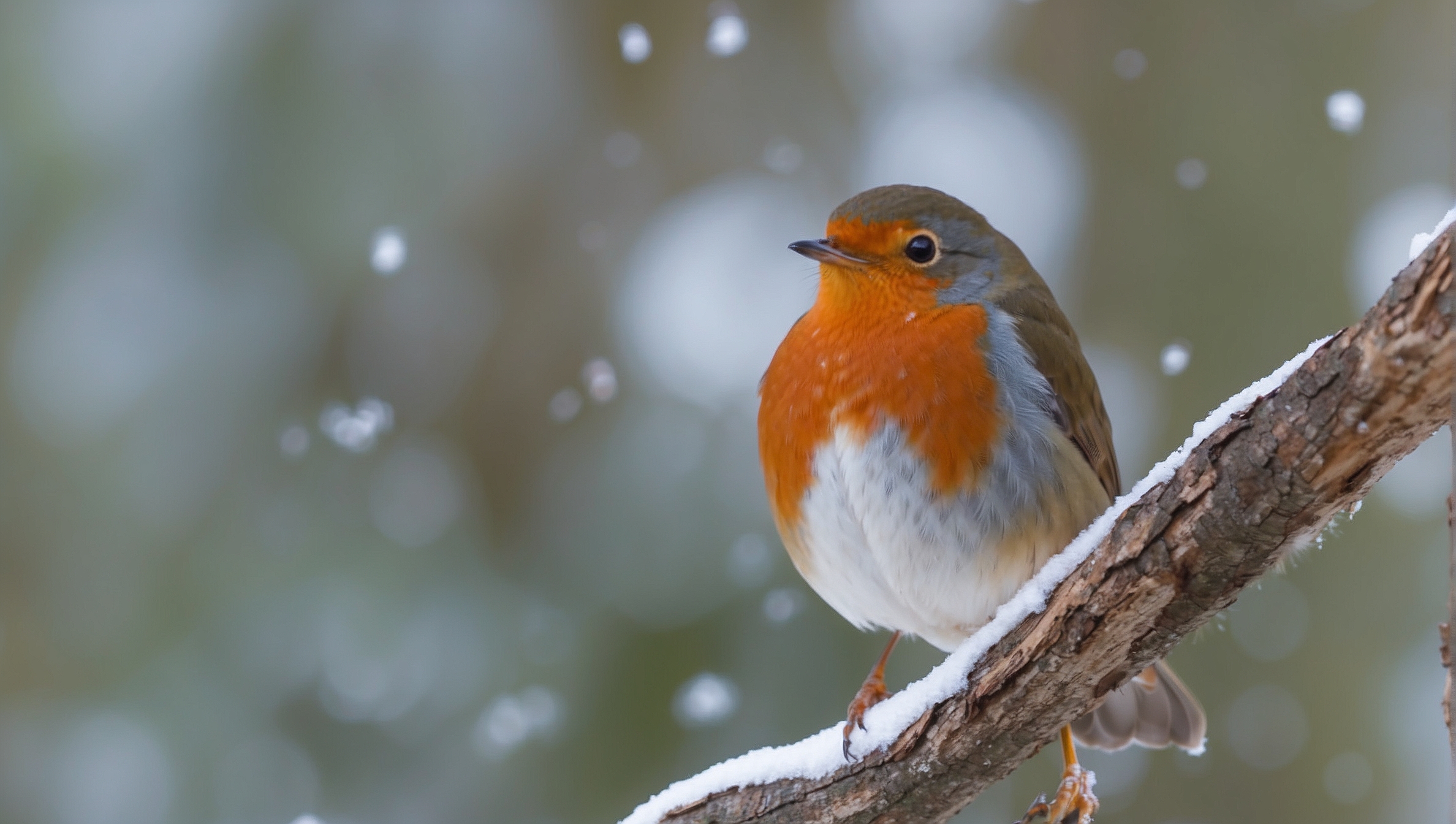
Do Robins Sleep In Trees?
No, robins do not sleep in trees. They actually prefer to sleep on the ground, in a sheltered spot like under a bush or in long grass.
If there are no suitable spots on the ground, robins will sometimes sleep in a tree. But they usually only do this if they’re sick or injured, and they’re unable to find a safe place on the ground.
Why Are Robins Associated With Christmas?
The robin has long been associated with Christmas. This is because in the UK, it is called the “redbreast” and has a red breast.
The association between the robin and Christmas stems from the fact that they are seen singing during this time of year, often before they migrate to warmer climates.
They also have a habit of building nests close to humans, which can make them seem like friendly companions or messengers even though they are wild animals!
In many cultures around the world, people associate robins with springtime or coming back from winter (or both). This means that different cultures will have different traditions based on their beliefs about what happens when a robin appears.
Some cultures believe that if a robin flies into your house, it is a sign of good luck. In others, a robin flying into your house is a sign that someone in your family will soon die.
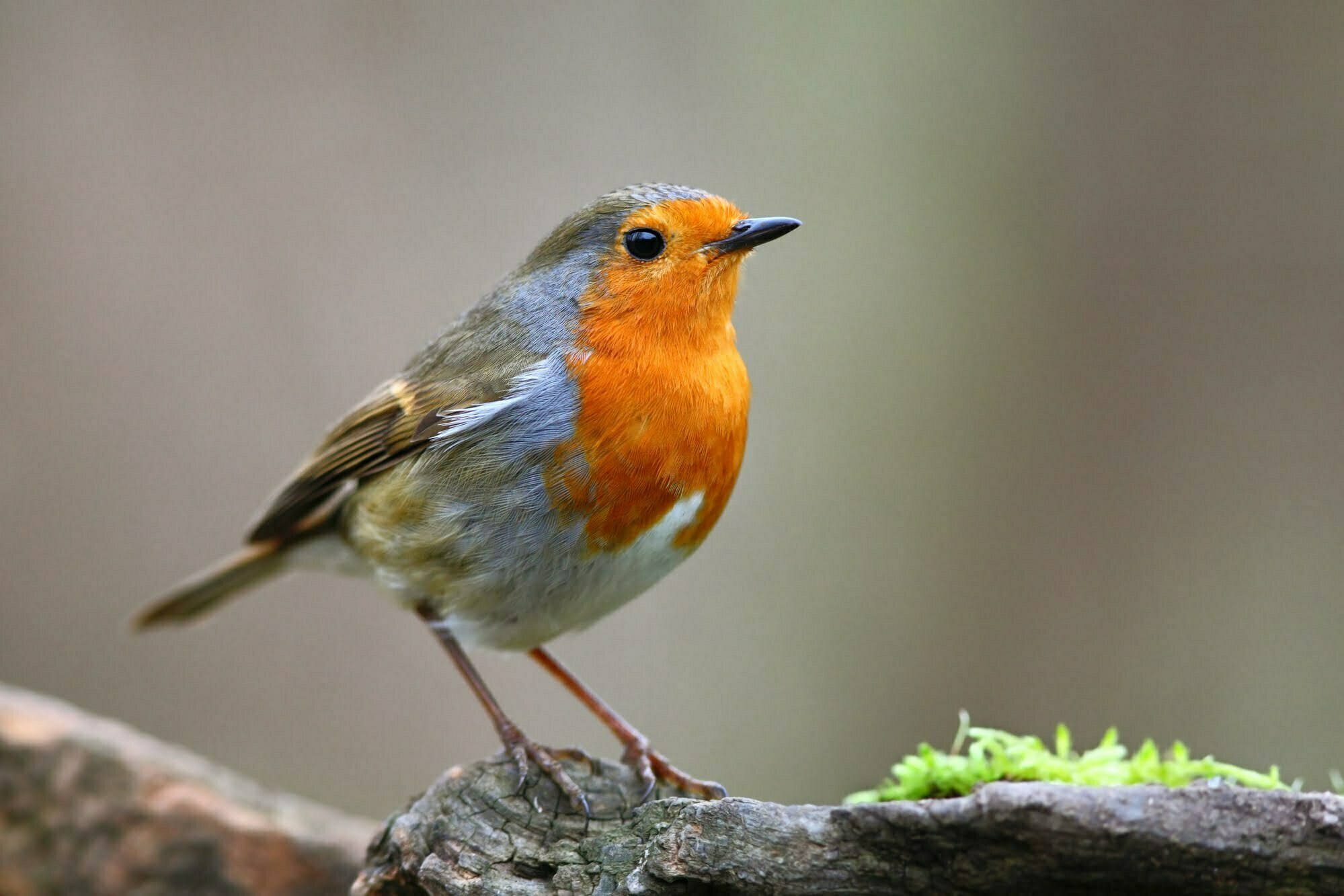
Interesting Facts About Robins
- The robin is an omnivore, meaning it eats both animals and plants.
- Robins are monogamous—that’s to say, they only mate with one partner for life. (That’s true of many birds.)
- Robins are territorial, which means that each pair defends a territory from other pairs. If you see two robins fighting over food or territory, don’t worry: They’re just doing their job!
- Robins can be diurnal or nocturnal; this depends on where they live and what time of year it is. In the summer months when there are lots of insects around at night time, it makes sense for them to hunt at night rather than during the day when all the good stuff has disappeared underground into its burrow.
Robins are a very common sight in the United States, Europe and Canada, as well as throughout much of the northern hemisphere.
Their bright red breast is an iconic symbol of springtime and their melodious chirps make them a welcome sight in even the dreariest winters. Their songs are also said to bring good luck, so keep your eyes peeled for robins!
